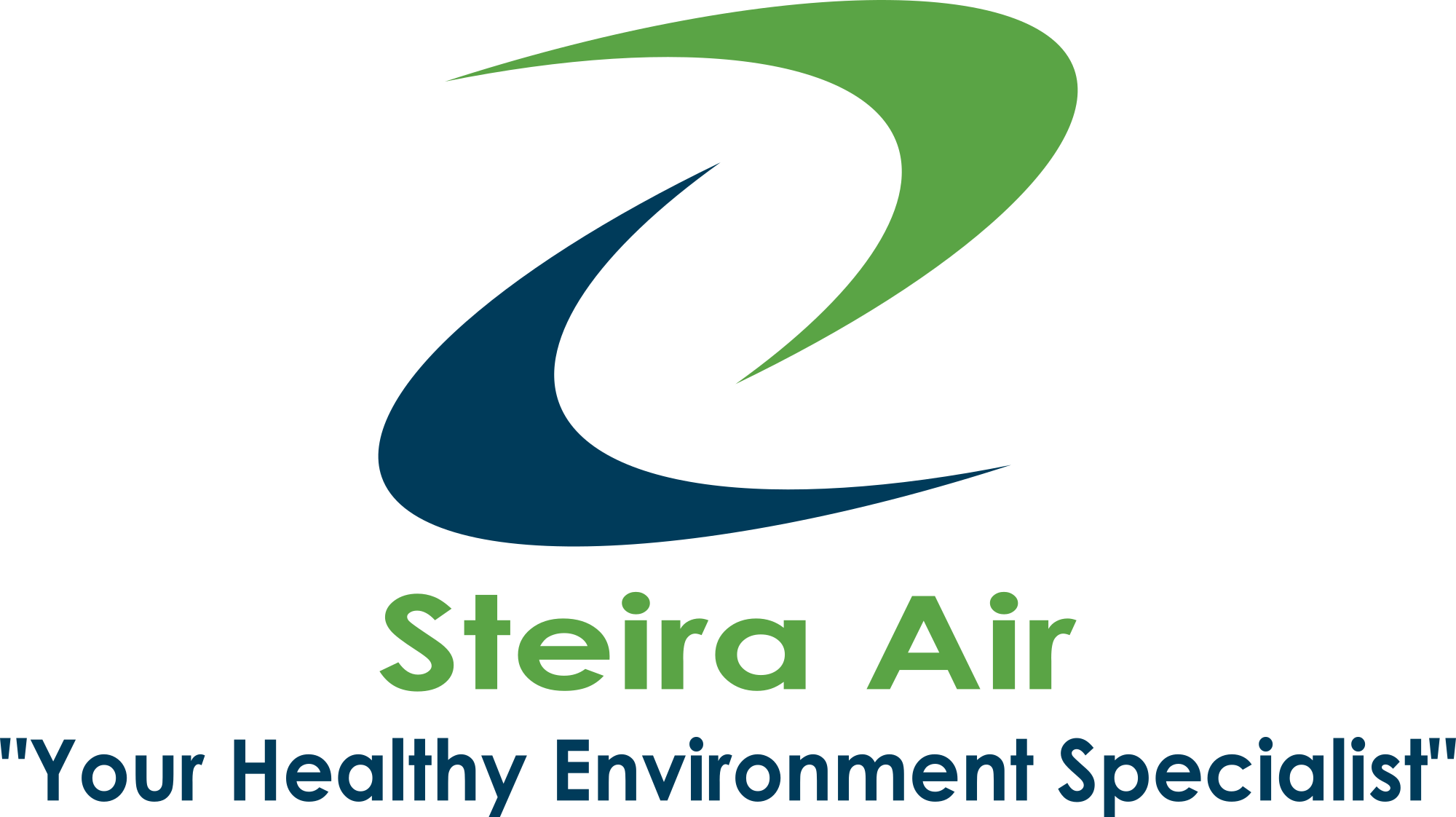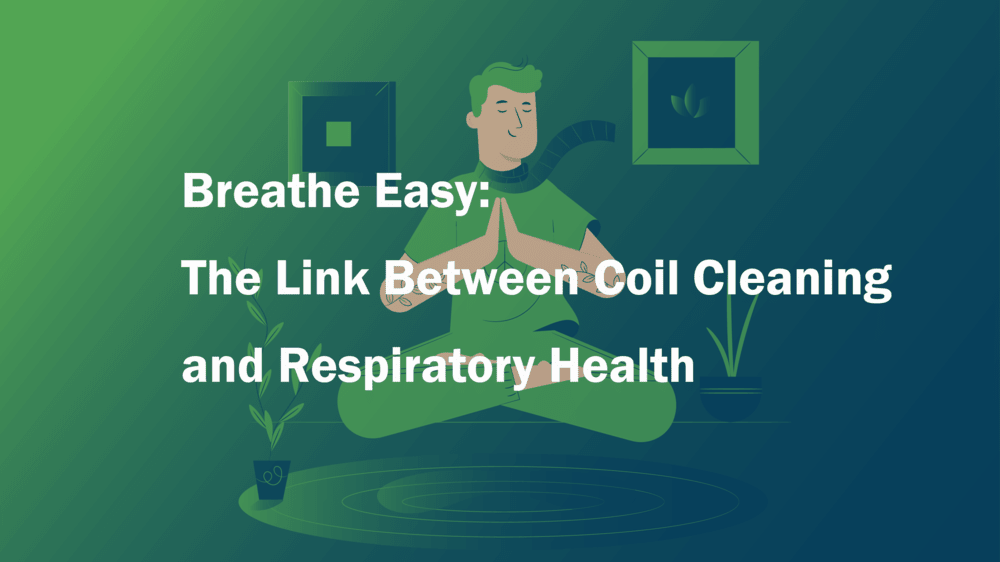Breathe Easy: The Link Between Coil Cleaning and Respiratory Health

Crafting Tomorrow: A Deep Dive into Steira Air’s CAM Innovations
January 26, 2024
Money-Saving Magic: How Proper Coil Maintenance Can Reduce Operating Costs
January 29, 2024Breathe Easy: The Link Between Coil Cleaning and Respiratory Health
In the quest for a healthy indoor environment, we often focus on factors such as air purifiers, ventilation systems, and natural air circulation. However, there’s a crucial, yet often overlooked component that plays a significant role in ensuring optimal respiratory health – coil cleaning. This blog aims to unravel the intricate connection between coil cleaning and respiratory well-being, exploring the importance of maintaining clean HVAC (Heating, Ventilation, and Air Conditioning) coils cleaner in our living and working spaces.
Understanding HVAC Coils:
HVAC systems are the unsung heroes of indoor comfort, responsible for regulating temperature, humidity, and air quality. At the heart of these systems are coils – components that exchange heat and moisture to maintain a comfortable indoor environment. While these coils are essential for the efficiency of HVAC systems, they can also become breeding grounds for contaminants that, if left unchecked, may negatively impact respiratory health.
The Link Between Dirty Coils and Respiratory Issues:
Mold and Bacteria Growth:
The accumulation of moisture on HVAC coils provides an ideal environment for mold and bacteria to thrive. As air passes over these contaminated coils, these microorganisms can be released into the indoor air, potentially triggering respiratory problems.
Particulate Matter Emissions:
Dirt and debris that accumulate on dirty coils can lead to the release of particulate matter into the air. Inhaling these particles can irritate the respiratory system, causing discomfort and exacerbating existing respiratory conditions.
Reduced Airflow Efficiency:
The buildup of dirt on coils hinders the efficient exchange of heat and moisture. This reduction in airflow not only strains the HVAC system but can also result in the release of more pollutants into the air, compromising respiratory health.
Allergen Circulation:
Contaminated coils can act as reservoirs for common indoor allergens. When the HVAC system operates, these allergens can be circulated throughout the indoor space, leading to allergic reactions and respiratory discomfort.
The Impact on Respiratory Health:
Aggravation of Respiratory Conditions:
For individuals with pre-existing respiratory conditions such as asthma or allergies, exposure to the contaminants released by dirty coils can exacerbate symptoms, leading to increased respiratory distress.
Risk of Respiratory Infections:
Mold and bacteria present on dirty coils can pose a risk of respiratory infections, especially in individuals with weakened immune systems. The continuous circulation of contaminated air may contribute to the spread of infections.
Persistent Coughing and Discomfort:
Inhaling particulate matter and allergens released by dirty coils can result in persistent coughing, throat irritation, and general discomfort, affecting the overall quality of life for occupants.
Decreased Lung Function:
Prolonged exposure to poor indoor air quality stemming from dirty coils may contribute to a decline in lung function over time. This is particularly concerning for individuals with compromised respiratory health.
The Significance of Regular Coil Cleaning:
Preventive Respiratory Measures:
Importance: Regular coil cleaning serves as a proactive measure to prevent respiratory issues associated with contaminated air.
Benefits: By eliminating potential sources of contamination within the HVAC system, individuals can enjoy cleaner air, reducing the likelihood of respiratory discomfort and safeguarding long-term respiratory health.
Enhanced Indoor Air Quality:
Importance: Clean coils contribute to improved indoor air quality by preventing the release of contaminants into the air.
Benefits: Occupants experience a healthier and more comfortable living or working environment, free from the irritants that can compromise respiratory health.
Optimized HVAC System Performance:
Importance: Regular cleaning ensures the efficient operation of HVAC systems by preventing the buildup of dirt and debris on coils.
Benefits: An optimized system operates at peak performance, reducing energy consumption and promoting cost savings while maintaining a continuous flow of clean air.
Extension of HVAC System Lifespan:
Importance: Routine maintenance, including coil cleaning, contributes to prolonging the lifespan of HVAC systems.
Benefits: Well-maintained systems are less prone to breakdowns, ensuring continuous clean air circulation for an extended period.
Compliance with Indoor Air Quality Standards:
Importance: Regular coil cleaning aligns with indoor air quality standards and regulations.
Benefits: Ensuring compliance demonstrates a commitment to creating a safe and healthy indoor environment, fostering well-being among occupants.
Implementing Regular Coil Cleaning:
Scheduled Maintenance Programs:
Approach: Establish scheduled maintenance programs that include routine coil cleaning.
Benefits: Predictable and regular maintenance reduces the risk of neglect, ensuring that coil cleaning becomes an integral part of the HVAC system upkeep.
Professional Coil Cleaning Services:
Approach: Engage professional HVAC services for comprehensive coil cleaning.
Benefits: Professionals possess the expertise, tools, and cleaning agents necessary to effectively clean coils without risking damage to the system. Their services often include a thorough inspection to identify and address potential issues promptly.
Integration with HVAC System Inspections:
Approach: Integrate coil cleaning into routine HVAC system inspections.
Benefits: This holistic approach ensures that coil cleanliness is assessed alongside other system components, allowing for a comprehensive evaluation of the system’s overall health.
Educating Occupants on the Importance:
Approach: Educate building occupants on the importance of regular coil cleaning.
Benefits: Increasing awareness fosters a collective responsibility for maintaining a healthy indoor environment. Occupants become proactive partners in ensuring the cleanliness of the HVAC system.
Professional Coil Cleaning vs. DIY Approaches:
Professional Coil Cleaning:
Expertise and Precision:
Advantage: HVAC professionals possess the expertise to comprehensively clean coils without compromising the integrity of the system.
Benefit: Precision in cleaning ensures optimal performance and longevity of the HVAC system.
Specialized Tools and Cleaning Agents:
Advantage: Professionals use specialized tools and cleaning agents designed for effective coil cleaning.
Benefit: This ensures a thorough removal of contaminants without causing damage to the coils.
Thorough Inspection:
Advantage: Professional services often include a thorough inspection of the entire HVAC system.
Benefit: Identifying and addressing potential issues promptly contributes to the overall health and efficiency of the system.
Efficient and Time-Saving:
Advantage: Professional cleaning is efficient and time-saving compared to DIY methods.
Benefit: Quick and effective cleaning minimizes downtime and disruption to occupants.
Long-Term Cost Savings:
Advantage: Well-executed professional cleaning contributes to the extended lifespan of the HVAC system.
Benefit: Long-term cost savings result from reduced energy consumption and fewer system breakdowns.
DIY Coil Cleaning:
Risk of Damage:
Challenge: DIY cleaning may pose a risk of damage to coils if not executed with precision.
Consideration: Inexperienced handling may lead to unintended consequences, potentially compromising the performance of the HVAC system.
Limited Access to Specialized Tools:
Challenge: DIY enthusiasts may lack access to specialized tools and cleaning agents.
Consideration: The absence of proper equipment may result in incomplete cleaning, leaving contaminants on the coils.
Time-Consuming:
Challenge: DIY coil cleaning can be time-consuming, especially for individuals without prior experience.
Consideration: Extended cleaning times may lead to increased downtime and inconvenience for occupants.
Incomplete Inspection:
Challenge: DIY methods may lack the thorough inspection offered by professional services.
Consideration: Undetected issues may persist, potentially affecting the long-term performance of the HVAC system.
Conclusion:
The connection between coil cleaning and respiratory health is undeniable. As we strive for well-being within our indoor spaces, prioritizing the maintenance of HVAC coils emerges as a key factor. Clean coils not only contribute to enhanced indoor air quality but also act as a preventive measure against respiratory issues. So, let’s embrace a proactive approach to HVAC coil cleaner maintenance, ensuring that our living and working environments are synonymous with clean, fresh air, and ultimately, optimal respiratory health.




